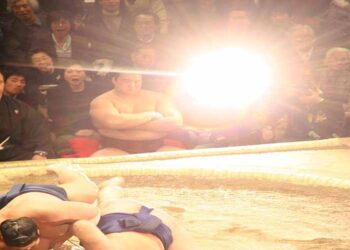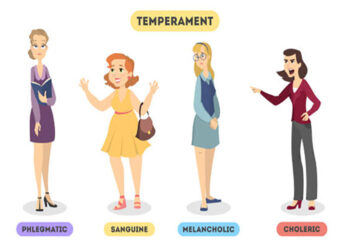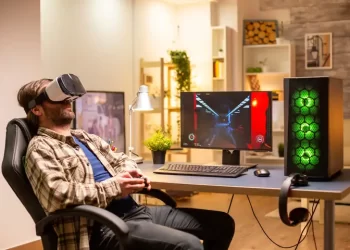
We all experience symptoms of eye strain sometimes, after staring at a screen or object for a very long time. Staring on electronic screens for a long time has been shown to be associated with eye strain.
Some of the symptoms of eye strain include the following:
- Sore, tired or burning eyes
- Blurred or double vision
- Watery, itchy or dry eyes
- Headache
- Inability to focus your sight, etc
Eye strain causes problems related to vision and accommodation (which is the ability of the eye to adjust its view to short and long-distance objects). However, if you are bound to continue looking at screens for long periods (due to any reason, maybe you need to work on your device, etc), the 20-20-20 rule was invented to help protect you from eye strains.
What is the 20-20-20 Rule?
According to the 20-20-20 rule, to protect your eye from eye strain when you continuously stare at a light-emitting electronic device, look at something 20 feet away for 20 seconds for every 20 minutes you stare at your screen.
The 20-20-20 was invented and popularized by Dr Jeff Anshell, a specialist in vision ergonomics. He recommended the rule to deal with and prevent eye strains for long-screen users.
For example, for every 20 minutes that you stare at your mobile phone today, and look away for 20 seconds, towards an object or a location at least 20 feet away (6 meters).
The 20-20-20 rule can also be used when you are staring at a distant object or screen for a very long time. Take 20 seconds every 20 minutes to look at an object or scenery that is 20 feet away.
How does the 20-20-20 rule prevent eye strain?
Eye strain occurs primarily because of weakness or pseudo-paralysis of the ciliary muscle in the eye. The ciliary muscles are a long band of muscles connecting the lens of the eye to the wall of the eyeball. The contraction and relaxation of the ciliary muscles are responsible for changing the focusing power of the lens, which is the most crucial component of accommodation.
In the absence of that function, it will become difficult for the eye to change its focus when looking at near and far objects, resulting in poor vision and a need to put more energy into seeing.
According to the American Optometric Association, the usage of digital devices continuously for two hours is adequate to bring about digital eye strain[1]Digital Eye Strain- A Comprehensive Review – PMC. This is because it keeps the ciliary muscles in a continuously relaxed (hyperpolarized) state for too long, making it difficult to perform alternate contraction and relaxation actions is occurs on a normal day.
According to a study published in 2013 among college students, students who used the computer for more than 2 hours per day experienced symptoms of eye strain. Students who regularly looked at far objects in-between the work had less frequency of eye strain.[2]Computer vision syndrome: a study of knowledge and practices in university students | Nepalese Journal of Ophthalmology
The 20-20-20 rule, therefore, prevents eye strain in long-period screen users by ensuring that you exercise the ciliary muscles every 20 minutes and prevent eye strain caused by continuous near work and screen time.
How to apply the 20-20-20 rule
The 20-20-20 rule is simple and easy to practice as summarized in the steps below.
- When you are about to do a near-eye-work, maybe reading a book, or watching on the screen, go over to set an alarm on your mobile phone or your screen device to go off after 20 minutes.
- Set the snooze time to 20 minutes so that when you snooze the alarm, it rings again after 20 minutes.
- Then, as you start reading your book or watching on your screen, stop immediately you hear the alarm ring, snooze it, and focus at least 20 feet (about 6 meters) away from you for at least 20 seconds.
- Resume your book, movie, or computer work until the alarm rings again.
- It can also be used when you are staring at a distant object for a very long time. You want the lens muscles to alternate to keep them fully functional.
Other benefits of the 20-20-20 rule for the eye
Other benefits of the 20-20-20 rule include:
- Allows you to take some mental breaks as well. Your brain needs to recharge for full performance, otherwise, you get bored easily.
- It helps to reduce continuous exposure to blue light from screens. Blue light emission from screens has been found to be associated with eye strain too.
- Additionally, the 20-20-20 rule also helps protect the eye against dryness by allowing you to do a wide blink to spread the tear film over the entire corneal eye surface.
Effects of eye strain
Apart from the symptoms of eye strain which can be discomforting, eye strain can affect common activities of daily living and work. These include:
- Reading school work.
- Poor performance at work.
- Problems working or driving.
- Headaches from eye strain can cause significant distress.
These and many more distressing conditions make the 20-20-20 rule a highly recommended method of preventing eye strain as it is cheap and simple to do.
Other ways to prevent eye straining
Preventing eye strain could require other interventions asides from the 20-20-20 rule, particularly if there are any underlying eye conditions like refractory error, amblyopia, conjunctivitis, keratitis, etc.
The following methods can also be used in preventing eye strain.
- Eye drops or artificial tears: This helps keep the corneal surface moist. When you stare too long without blinking, the eye can dry out easily. Artificial tears in the form of eye drops can help keep it moist for longer periods and prevent eye strain.
- Use anti-glare glasses/screens: Glare is associated with eye fatigue and eye strain. Protective anti-glare glasses can be worn or screens applied to computers, phones, tablets, and eyeglasses to prevent eye strain and other problems.
- Check screen location from your eyes: The American Association of Opthalmology (AAO) recommends that when using a computer, you should be sitting about 25 inches (right about at arm’s length) from the screen, and the screen positioned such that your eye gazes slightly downward, not straight ahead or up.
- Adjust screen contrast and brightness: Change the brightness of your screen so that it is just bright enough to read without straining. It should not be too bright or too dim. Adjust the contrast depending on the presence of sunlight.
- Choose glasses over contact lenses: Contact lenses for lengthy periods make the eye drier or make dry eyes worse.
- Use a humidifier: A humidifier helps to increase your room temperature to prevent eyes from drying out too quickly.
- Schedule regular visits with the ophthalmologist: Untreated refractive errors are a major cause of straining. Regular eye checkups will ensure that any changes to your eyesight are addressed as soon as possible.
Conclusion
While mobile phones and computers have become a part of our everyday lives, they are associated with eye-straining. The 20-20-20 rule was developed as a behavioural approach to prevent eye strain in people who stare at screens for long periods of time.
The 20-20-20 rule is simple to adopt and only requires you to look 20 feet away for 20 seconds every 20 minutes.

















